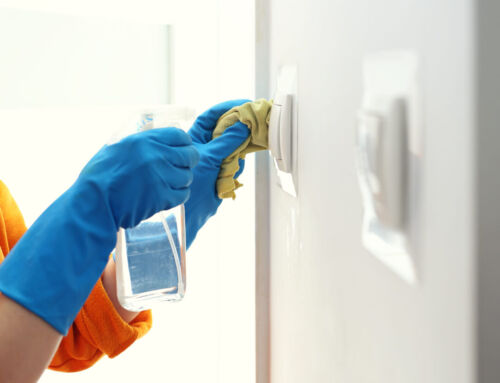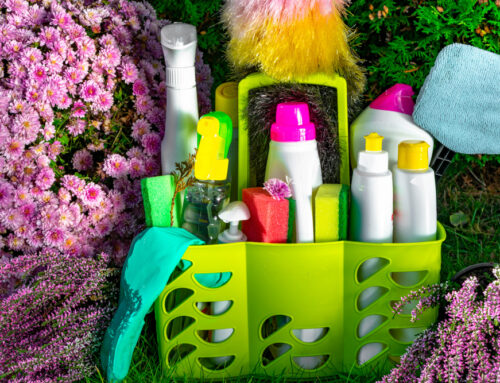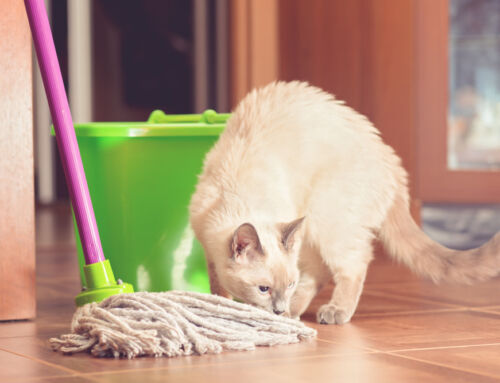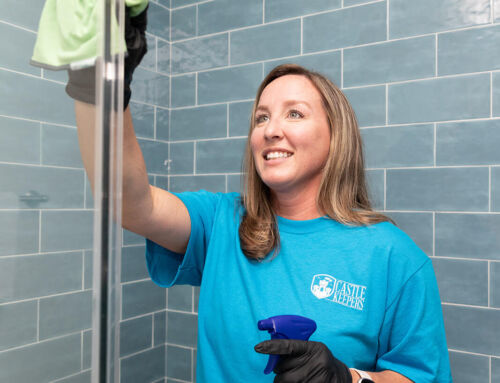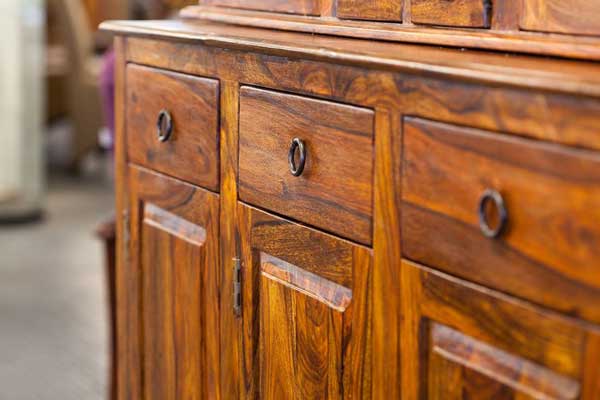
Caring for Wood Furniture
Wood Furniture
Wood is found everywhere in the home, so caring for it is important. Because it is used in so many different ways – furniture, flooring, blinds, etc. – there are many contradictory recommendations for caring for it. Here are a few basic rules for caring for wood that no one can dispute:
- Because dust is abrasive, it is important to frequently dust or vacuum both wood floors and furniture. Infrequent or improper dusting over the years will create a worn, dull surface. Keeping wood clean improves its appearance and extends its life.
- Use water in cleaning wood with great caution.
- Furniture surfaces (but NOT floors) should be slightly slippery so that objects and dust glide over them and do not scratch.
Substances That Are Harmful to Wood
Substances that are harmful to wood and wood finishes, besides dust, include alcohol, acetone, acids, and alkalis. All of these will harm varnishes, shellac, lacquer, and water-based finishes. Alcohol is found in perfumes, colognes, many medicines, beer, wine, and liquor. Acetone is found in nail polish removers and paint thinners. Solvents, acids, and alkalis are found in various cleaning substances and may also harm wood furniture. Skin oils, found in fingerprints and perspiration, can damage wood, especially when not coated with protective wax or polish, as can certain foods.
Repeated, frequent exposure to even mild alkaline cleaning solutions may soften hardwood finishes over time. Restaurant tables sometimes feel gummy or tacky to the touch, even though they are clean – because they are cleaned with an alkaline cleaning solution dozens of times a day and are constantly damp. Chair backs exposed to oils from many hands over the years can also become tacky. Only mild, neutral soaps or detergents should be used to clean wood. Varnishes, especially polyurethane varnish, have better resistance to solvents, acids, and alkalis than other types of finishes. Resistance, however, is not invulnerability, and protection and caution are your best bet for all finishes.
Water is bad for wood. When water penetrates a finish it can cause swelling, warping, and staining. Hard finishes such as shellac, lacquer, varnish, water-based finishes, and polyurethane do not prevent moisture from entering wood but can slow the rate at which atmospheric moisture enters or leaves the wood – this is one of the most significant protections they offer. None of these finishes will prevent standing water from eventually soaking into the wood beneath. Polyurethane varnishes are the most resistant to water; the thicker the finish the better the resistance, and the more time to act in case of spills. When using water to clean wood, carefully avoid getting the wood damp. Use coasters, table pads and cloths, runners, and other precautions against water rings and spills.
Shellac and lacquer are more vulnerable than polyurethane and other varnishes, and oil and wax finishes have the least resistance to scratches and wear. To guard against scratching, do not slide objects on wood. Lift to move them or dust under them. Do not set objects directly on wood, but use coasters, trivets, tablecloths, doilies, and other covers to guard against scratches as well as heat, spills, and stains. Use felt bottoms on lamps and decorative items. Be careful when placing plastic items on wood surfaces– color from plastic placemats, tablecloths, toys, notebooks, wrappers, and appliance cases can eventually leach into the wood, or plastic may stick to the finish and damage it when the plastic is pulled up.
Wood does best at moderate temperatures and humidity. Temperatures around 70 degrees F and relative humidity of approximately 50 percent are ideal for wood. Storage in attics and basements can run the extremes in attics and basements and cause rapid aging of wood furniture. Light can bleach any wood surface, no matter what finish is applied. Avoid setting furniture in direct sunlight and if you close your home for part of the year cover the furniture with sheets or tarps while you are gone.
Caring for Wood Furniture
Wood care products can be confusing. Wax is the hardest, thickest, most long-lasting type of surface protection and is great on both finished and unfinished wood. When applied correctly, paste wax forms a thin, hard coating that prevents dust from penetrating through to the permanent finish and acting as an abrasive, and it creates a slippery surface that also reduces abrasion on the finish. Liquid waxes do the same thing, only to a lesser degree because they go on thinner and contain less hard wax. Because waxes dry hard, they do not smear or attract and hold dirt and dust. Paste wax will last from six months to two to three years depending on how many coats are applied and how much use the furniture gets. Paste wax, while it certainly does not prevent water rings in the wood’s finish, does delay their formation and thus can help reduce their seriousness when they do occur. It gives you a little time to detect the problem and fix it before damage is done.
Oily polishes, cleaners, and furniture oils will not make a hard, long lasting coating on the wood as wax does. The main protection they offer is to increase slipperiness to deter dust. The shine and more limited protection last only until they evaporate, which can occur in as little as a few days. Those that contain silicone oil last the longest, have the highest shine, and create the most slippery surface, but can interfere with refinishing of wood furniture. Oily products necessarily leave an oily film on wood surfaces that, until it evaporates, smears when you touch. Liquids and sprays of all types are most convenient to use for cleaning and dusting wood furniture. They offer a brilliant shine versus the softer sheen of paste wax.
Cleaning Wood Furniture
Clean wood with water or water-based products only when necessary – if it is covered with fingerprints, stickiness, food spills, or if it is otherwise dirty in a way that dusting or rubbing cannot remove. Use a mild or pH neutral cleaning product designed for wood and follow product directions. You can also use a small amount of plain, mild, or pH neutral dishwashing liquid or cleaner.
Avoid getting the wood more than barely damp on the surface and avoid letting any water drip or stand on the surface; immediately wipe up any drips with a dry cloth. Wipe carefully in the direction of the grain, rinsing your cloth as it becomes dirty and wringing it hard. Continue until no soil appears on the cloth. Immediately dry with a clean, dry cloth. Re-wax or polish only when furniture is completely dry.
Summary of Wood Care Basics:
- Dust or vacuum wood furniture and floors frequently.
- Never let wood get soaked.
- Most wood can be occasionally damp mopped or damp wiped without harm as long as the cloth or mop is carefully wrung out and wood is not permitted to become more than barely damp.
- Wax or oil wood furniture, but NOT urethane-type wood floors.
Sources:
Mendelson, Cheryl. Home Comforts: The Art and Science of Keeping House. Scribner, 1999.
Additional Resources
- How to Clean Wood Floors
- How to Clean a Grill
- How to Vacuum
- How to Dust
- How to Fold a Fitted Sheet
- How Often Should I Clean That?
About Castle Keepers House Cleaning

LET US DO THE CLEANING. YOU DO THE RELAXING.
Share this article
A quick overview of the topics covered in this article.

